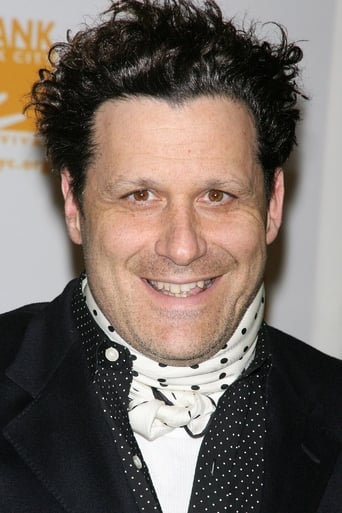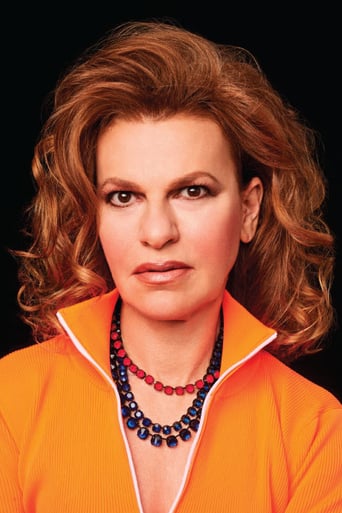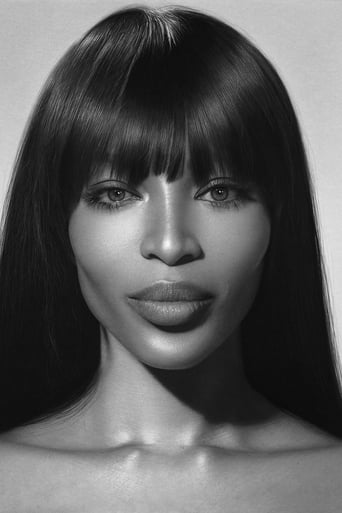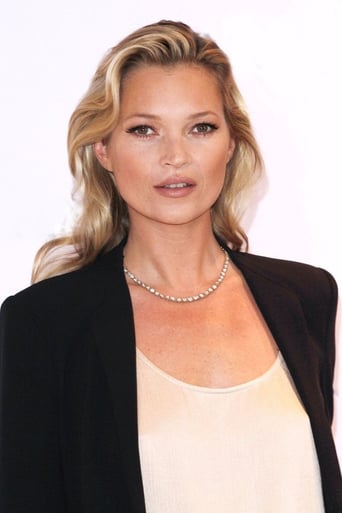ada
the leading man is my tpye
TrueHello
Fun premise, good actors, bad writing. This film seemed to have potential at the beginning but it quickly devolves into a trite action film. Ultimately it's very boring.
Ketrivie
It isn't all that great, actually. Really cheesy and very predicable of how certain scenes are gonna turn play out. However, I guess that's the charm of it all, because I would consider this one of my guilty pleasures.
Darin
One of the film's great tricks is that, for a time, you think it will go down a rabbit hole of unrealistic glorification.
lindsay
While not ostensibly about the place of women in contemporary society, the images of Unzipped represent the tension and dichotomy of two extreme conceptions of women: the hyper-feminine sex object, and the successful, masculine career-women. The film unfolds through the male gaze, violates the space between public and private, legitimates female subjugation, and upholds stereotypes of both extreme conceptions of "women." The camera's view of attractive females makes them sex objects by its leering, sexual viewpoint. The opening clip depicts a woman pulling a dress over her pantied buttocks. The camera focuses on the blond smiling reporter when she questions Isaac about the theme of his show, instead of his reply. It objectifies the female body by explicitly focusing on body parts such as navel, feet, and breasts, rather than the human face. This lack of respect displays the core value of females in a patriarchal society to be sexual in nature. The title alludes to a scene of Isaac unzipping a woman's outfit all the way under her crotch. The unconscious thrust of the film is the male control over female sexual depictions.Males have a public business role and an unarticulated private one, whereas the film consistently shows the models' familial or social lives intruding on their professional lives. In Naomi Campbell's first fitting, Isaac teases her about her engagement. During the second fitting, she receives a social phone call. A model complains in an interview about her husband waiting for her at home, and behind the scenes at the show, the camera focuses on Cindy Crawford talking with partner Richard Gere. The most blatant violation of public and private spheres is the scrim the models change behind at the show, sexualizing their work. The audience sees the chaos, quick changes and naked bodies that are not typically intended for the public. Even while Isaac is asking the women if they would mind being seen in a bra and underwear for the show, the camera captures them in exactly these garments for the film. Ostensibly for artistic effect, the scrim and the chosen clips for the film add to the unstable nature of women in the work force.The film legitimates the subjugation of women in several ways. Isaac wonders how much it costs to book the "girls." Later, he says he's not suggesting that they be seen changing; he doesn't "give a sh*t if they want to do it, because they are gonna have to." The fact that his wishes prevail displays the male power to force women to conform to social or economic pressure. By not crediting the models as they appear on screen, the producers objectify and dehumanize them. When the viewer sees two people ripping a woman on the floor between them to remove her high-heeled boots, it's symbolic of her social struggle for equality, torn between two male conceptions of her.Male stereotypes of women tend towards the two extremes of sex kitten or professional woman. Eartha Kitt tells a story of how Orson Welles bit her neck and pushed her aside "like a little mouse." Making cat sounds, she emphasizes the animalistic, sexual nature of her undulating body. Naomi's nipples show through her tee-shirt while she wears the jacket of a beast; she's eroticized while looking like an animal. The sex kitten, embodied by the models, is also concerned about appearances. Backstage, the camera captures hair being curled, makeup being applied, and the pain of eyebrow-tweezing. When an interviewer asks a model about the difficulties of being glamorous, her work is framed in terms of appearance... while the camera focuses on Isaac working under her skirt, reminding the viewer she is a sexual object. The models themselves are vocal about their concerns. Cindy Crawford says, "you're a little close. My pores are not that small." Linda Evangelista screeches, "I must be out of my f*cking mind undressing next to the two best bodies in the business." Here we see concern about body image and appearances, and a reference to other women as bodies, a clear example of the subjugation of the female to a patriarchal order. The navels and bare breasts reveal more about the women's bodies, and public depictions of them, than the clothes Isaac has fashioned to cover them.On the other extreme, emasculated, professional women may be seen as the positive standard of the new woman to which all media should aspire. Whereas the models have no cited names, the professionals have a title when they appear on-screen. Supposedly, they earn respect from the camera that views each of them as a person not a body; however, these successful women are denied independence, as they are always in the frame with Isaac. The professionals are also stripped of all femininity. Polly Mellon, Candy Pratt and Sandra Bernhard all have gruff sounding voices and wear man-tailored shirts and suit jackets. They co-opt the male power system to gain respect and take away the threat of women in the work force. They are denied a gendered identity, even while they are still denied complete equality with men. They are seen on the phone, eating or talking, never behind a desk like Isaac. Successful women gain respect, but not to the extent that they are feminine.This is no longer a film about fashion, or even a look behind the scenes of a show, but rather a portrayal of women. Nina asks Isaac why he distracts the audience with a scrim, because the clothes look so good. Its real purpose is to access the models' bodies, having nothing to do with fashion design. Women are either viewed as sexual objects, or men in women's bodies, both of these depictions narrow and incomplete. The sign systems for fashion and female identity become entangled and inseparable. Through the camera's male gaze, the violation of public and private, and the advocacy of stereotypes, women continue to be devalued and unjustly portrayed.
MarieGabrielle
This documentary is reality before it tanked to the lowest common denominator, and worth watching.For someone who has only been marginally exposed to fashion, (As when I admittedly shop at Saks NY and buy off the rack), I did find this documentary intriguing and the creative ideas of Mizrahi interesting and unusual. His talent for unusual color combinations and prints is nicely manifested on the runway.Not too much pandering here to celebrity, though we do see some hangers-on in Mizrahi's daily life, his angst and ideas for a scrim (even imitated just this last week on a "Tyra Banks" show for Fashion Week) While I don't buy into all the hype and refuse to blindly follow fashion magazine trends, the models are lovely to watch, Cindy Crawford, Linda Evangelista, Naomi Campbell, Veronica Webb and a few others.Could now have a wider audience, "Unzipped" is far less shallow than more recent comparable documentaries on the fashion industry. 8/10.
ms-prorsum
This movie is wonderful and I've been watching it over and over since I was about 11! An intimate look at what goes on as a designer creates a collection, Unzipped shows all the people in the fashion world that mix and mingle while we watch Isaac Mizrahi come up with his latest collection for 1994. Isaac himself is hilarious with his quirks and impressions, and the characters he deals with from Eartha Kitt to Miss Mellen are ridiculous! Don't see this movie only for the supermodels because while they are there, they aren't the main focus, if you want that set up go for Catwalk instead, but here lies the whimsical tale of a collection destined for greatness and a designer who is as entertaining as his is talented.
haxboob
OK, I have seen Unzipped 4 times. I asked myself why, and I came up with a really great lie. Because watching Mizrahi stress out about his "beast/nanook of the North" creations makes me feel better about myself as a sane person. I use to think that the fashion industry was something special, once you have used this film to figure things out, you notice how SAD SAD SAD these people are. Designers make these costumes, famous and sickly models make them look interesting and then Anna Wintour makes you want to spend your next 5 paychecks for a stupid coat. A coat that makes you feel good for a few months, by the way thanks Donatella for that black half-trench number you came out with last year, I still feel good about myself every time I think I'm thin enough to put it on. Anyhoo, Isaac is a sad selfish mess and at the same time a very smart man with amazing taste. THe models, whom I LOVE LOVE LOVE to watch, are all tragic and annoying, save for Tara Banks and Cindy Crawford who seem to be the only models with a brain in their heads. I wanted to reach through the screen and punch Linda Evangelista for having such an annoying voice. Could you imagine Kyle having to listen to that at home? She needs to remain silent so I can see her as just utterly flawless. The film, like I said, makes me feel sane, like all my "problems" can be dealt with and that I don't ever have to resort to being such a hysterical end=of-the-world drama queen like Mizrahi. And his singing? and his dancing? and his annoying hair? If I had that hair I would have had it cut a long time ago. Having said this, he is richer than I will ever be and he has loads of more prospects than I will ever have. So screw me and good for him. I guess I have to admit it, I really liked this film. It's a guilty pleasure. see it.






